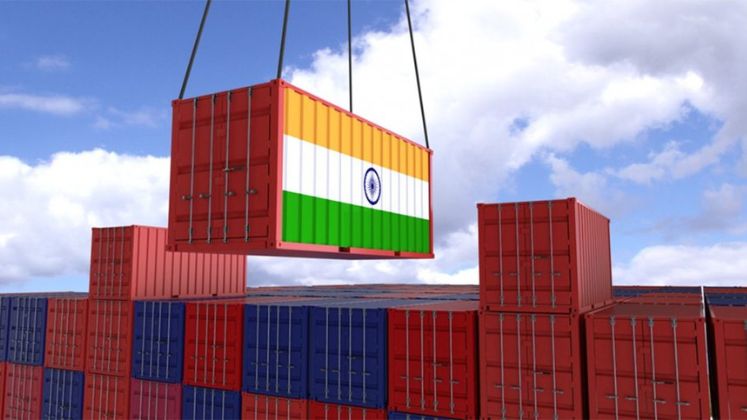India’s textile and apparel industry represents an enduring pillar of its economic and cultural heritage, tracing its origins back millennia. From the rich intricacy of traditional handlooms to the expansive machinery of modern industrial production, the sector has continually evolved to meet shifting global demands. This analysis investigates the trajectory of the industry over the past decades, with an emphasis on recent trends, global positioning, and projections for the future, supported by empirical data and insights from the last 3 to 6 years.
The Enduring Legacy of Indian Textiles
India’s textile sector epitomizes diversity and craftsmanship, embodying a confluence of tradition and modernity. Iconic textiles such as Banarasi silk, Kanjeevaram, and Pashmina exemplify the nation’s artisanal excellence, renowned globally for their sophistication. Today, India’s artisans seamlessly integrate these traditional elements with contemporary designs, catering to a broader, fashion-forward international clientele.
Historically, India’s export strength lay in its cotton, silk, and handloom products, positioning it as one of the leading producers of cotton globally. Handloom production alone sustains over 4.33 million individuals, underscoring its pivotal role in rural employment and cultural preservation.
Growth of the Indian Textile Industry: A Comprehensive Analysis
The past five years have demonstrated the sector’s resilience amidst macroeconomic challenges, including the COVID-19 pandemic. In 2022, India’s textile and apparel exports achieved a valuation of $44.4 billion, signifying a robust recovery and underscoring its competitive edge in the global market.
Key Industry Trends:
- Product Diversification:
- Indian exporters have transitioned from primarily raw materials, such as cotton yarn, to higher-value products like designer apparel, technical textiles, and sustainable fabrics.
- Sustainability and Green Practices:
- Rising consumer demand for sustainable products has propelled Indian manufacturers to adopt environmentally conscious production techniques, including the use of organic cotton, recycled fibres, and water-efficient dyeing processes.
- Digital Integration:
- Technological advancements, such as AI-driven design, e-commerce platforms, and virtual trade fairs, have enabled Indian firms to strengthen their global outreach and operational efficiencies.
Export Markets and Emerging Opportunities
India’s textile exports are dominated by markets in the United States, the European Union, the UAE, and China, collectively accounting for over half of its total exports. Simultaneously, nascent markets in Africa, Latin America, and Southeast Asia present untapped potential for growth.
Country-Specific Insights:
- United States:
- As the largest importer of Indian textiles, the U.S. market favours high-quality, cost-effective products, particularly in the home textiles and apparel segments.
- European Union:
- The EU’s growing preference for sustainable products has amplified demand for Indian organic cotton and eco-friendly fabrics.
- United Arab Emirates:
- Functioning as a re-export hub, the UAE facilitates Indian textile distribution across the Middle East and Africa.
- China:
- Imports substantial volumes of Indian cotton and intermediary raw materials, reflecting its reliance on India’s agricultural resources.
Showcasing Success: Ichalkaranji’s Rise
An illustrative case study originates from Ichalkaranji, Maharashtra, where a local manufacturer adopted sustainable practices and penetrated Europe’s high-end fashion market. Such narratives highlight the expansive potential of India’s smaller textile clusters in achieving global recognition.
Prospects for India’s Textile Industry
The global textile and apparel sector is projected to expand at a compound annual growth rate (CAGR) of 4.0%, reaching an estimated $1.2 trillion by 2030. India’s abundant raw materials, skilled labour force, and policy support—such as the Production-Linked Incentive (PLI) scheme—position it as a pivotal player in capturing a larger share of this growth.
Strategic Growth Catalysts:
- Government Initiatives:
- Programs such as the PLI scheme and the establishment of integrated textile parks aim to enhance competitiveness and export capacity.
- Sustainability Emphasis:
- Global preferences for eco-friendly products present significant opportunities for Indian manufacturers to consolidate their presence in premium markets.
- Innovation in Technical Textiles:
- Investment in technical textiles for applications in healthcare, automotive, and defences industries is a key growth driver.
- Digital Market Expansion:
- The burgeoning global e-commerce landscape provides Indian exporter’s direct access to international consumers, reducing intermediaries and enhancing profitability.
Overcoming Challenges
Despite its potential, the sector contends with challenges such as volatile raw material costs, stringent trade regulations, and intensifying competition from nations like Bangladesh and Vietnam. Addressing these issues necessitates strategic investments in quality enhancement, branding, and sustainability.
Conclusion
India’s textile export narrative is emblematic of its adaptability and innovation. From preserving traditional craftsmanship to embracing cutting-edge technologies and sustainable practices, the sector exemplifies a dynamic blend of heritage and progress. By leveraging government support, exploring new markets, and prioritizing ecological responsibility, India’s textile industry is poised to achieve unprecedented heights in the global arena.



